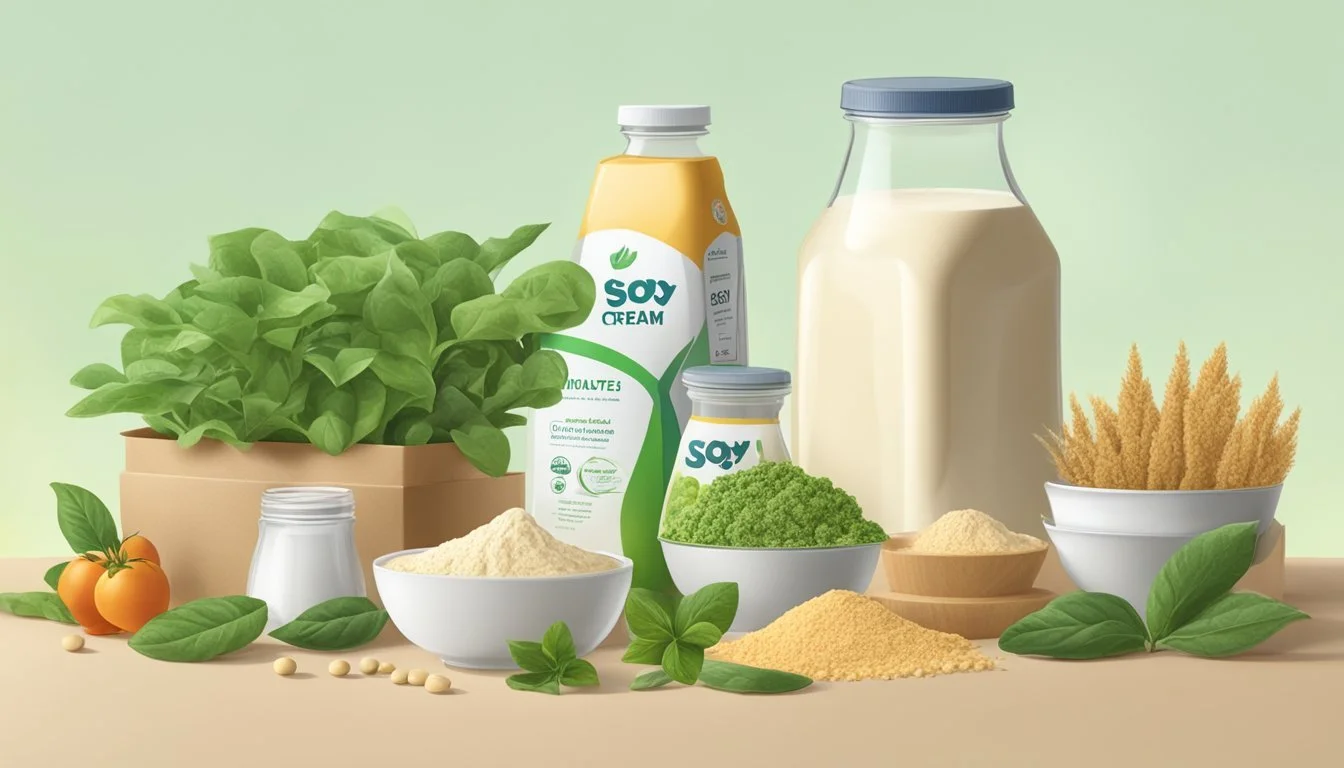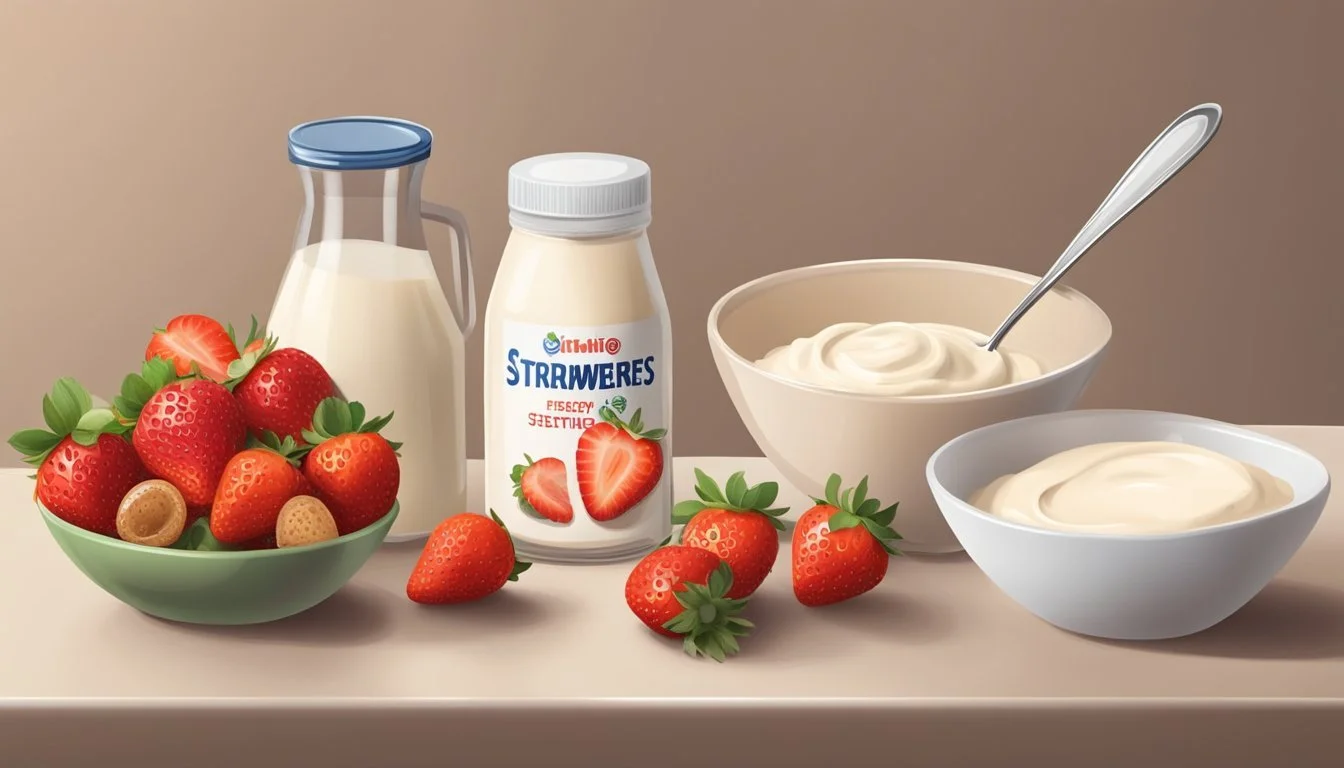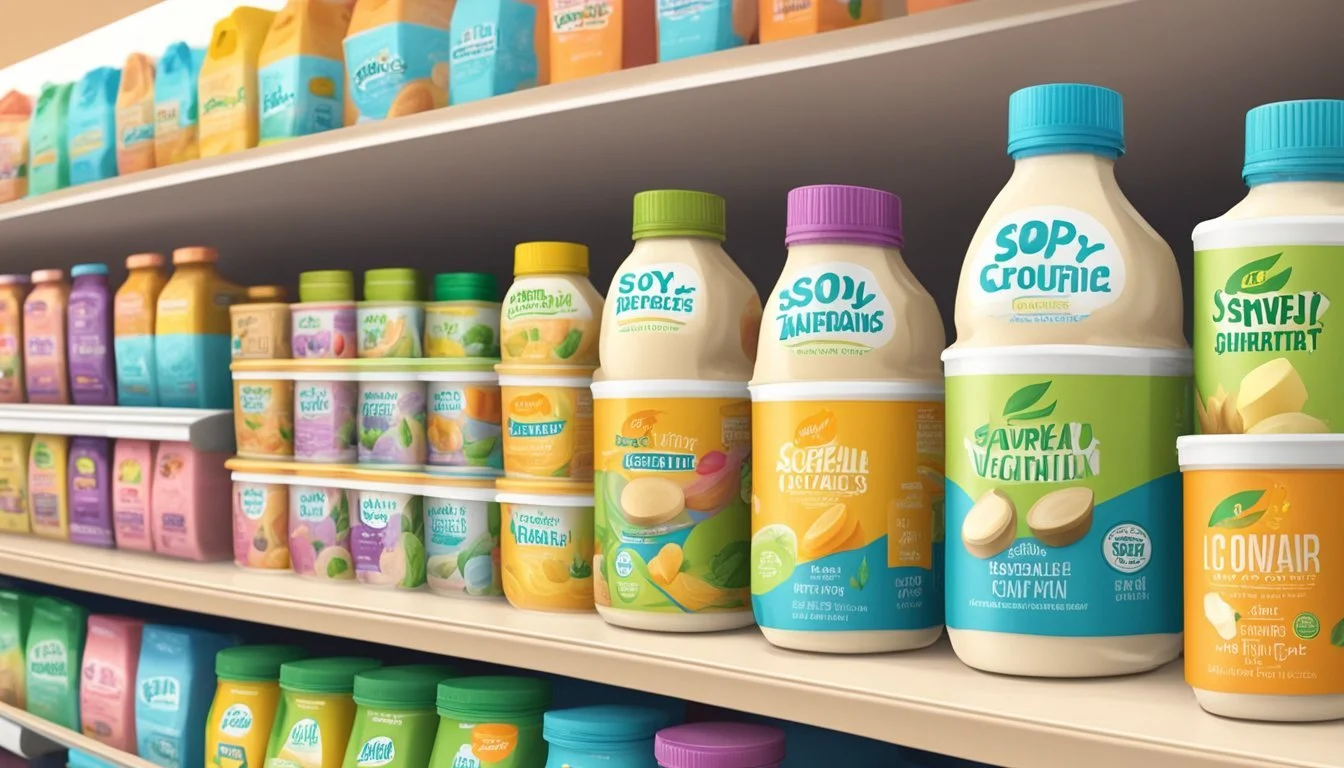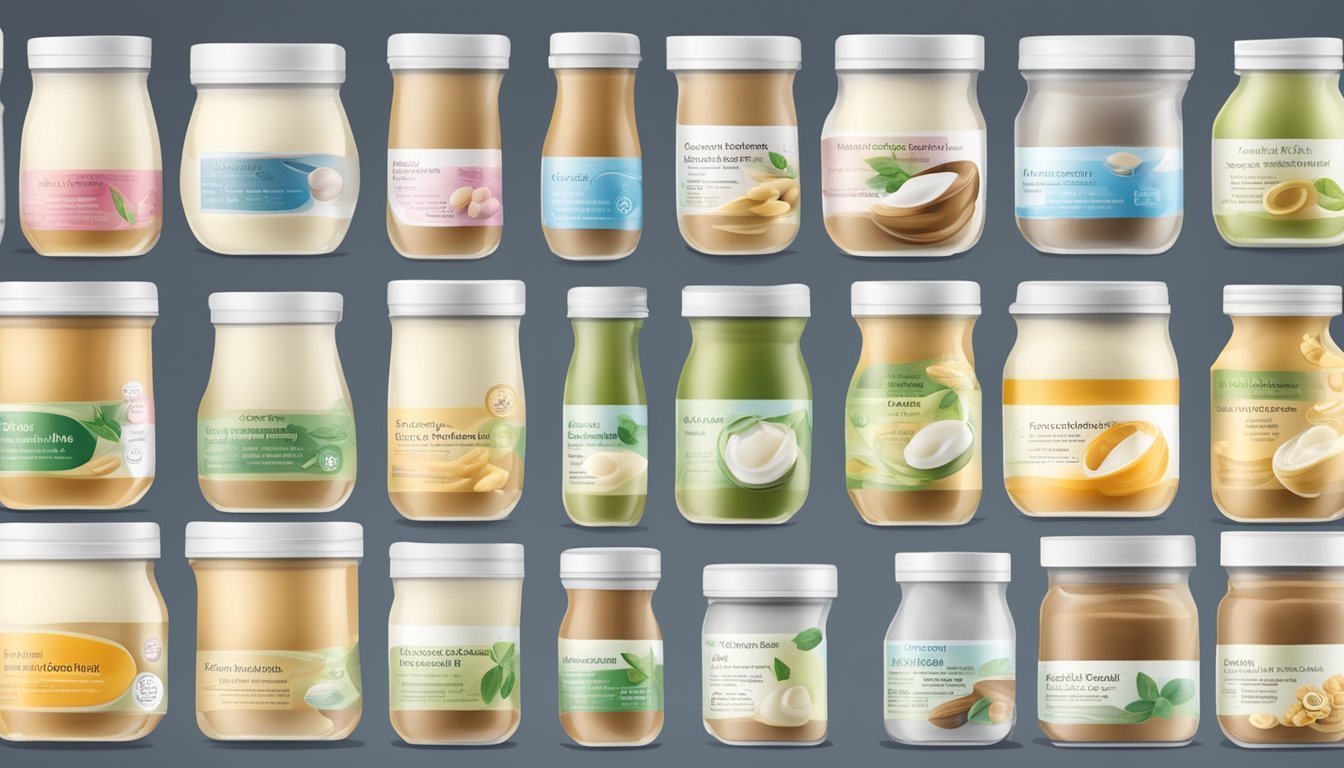Soy Cream Substitutes
Top Dairy-Free Alternatives for Cooking and Baking
Soy cream substitutes have become an essential part of the culinary world, especially for those who follow a vegan or vegetarian lifestyle, are lactose intolerant, or have dairy allergies. These substitutes allow for a seamless transition in recipes that typically require dairy-based heavy cream. They not only replicate the texture and richness but also cater to the dietary needs by avoiding animal products and lactose. Plant-based ingredients are at the forefront of these alternatives, providing versatility and nutritional benefits.
Considering the dietary restrictions and ethical choices of vegans, vegetarians, and individuals with lactose intolerance or allergies, the move towards plant-based substitutes is a testament to the evolving food industry. Soy-based creams offer a balance between maintaining the culinary integrity of creamy dishes and the inclusive values of a plant-based diet. They invariably serve the purpose of delivering the creaminess and mouthfeel that one would expect from traditional heavy cream without compromising on taste or quality.
With growing awareness and availability of plant-based products, soy cream substitutes now occupy a considerable space in grocery aisles, making their incorporation into daily diet more convenient. These substitutes ease the transition for those who wish to avoid dairy while opening up a realm of possibilities for new and traditional recipes alike. Equipped with a variety of soy-based alternatives, home cooks and professional chefs alike can confidently create dishes that are indulgent, inclusive, and in line with dietary preferences.
Understanding Cream Substitutes
In the culinary world, cream serves a pivotal role due to its unique properties that enhance the texture and flavor of dishes. Exploring substitutes for cream, particularly soy-based options, provides alternatives for those seeking dairy-free ingredients without compromising on consistency or taste.
Heavy Cream and Its Role in Cooking
Heavy cream is a dairy product known for its high fat content, which typically ranges from 36% to 40%. This characteristic allows it to create smooth, rich textures in various recipes. In baking, heavy cream contributes to the structure and moistness of cakes and pastries. In cooking, it's often used to add richness and creamy consistency to sauces, soups, and other dishes. Its ability to whip well makes it a staple for desserts like mousses and ganaches.
Nutrient Presence in Heavy Cream Fat High Saturated Fat Substantial Protein Moderate
Why Soy Cream Substitutes?
Soy cream substitutes come into play for those who opt for dairy-free diets, whether due to lactose intolerance, ethical reasons, or health considerations. Soy milk, which is the foundation of soy cream, is a plant-based liquid produced by soaking and grinding soybeans, then boiling the mixture and filtering out remaining particulates.
Soy cream substitutes mirror the consistency and creaminess that heavy cream imparts, albeit with a different nutritional profile. They generally contain less saturated fat and offer an alternative source of protein. For those concerned about health, soy cream can be a lower-fat option that doesn't skimp on texture. In cooking, it can successfully mimic the thickening quality of heavy cream, making it a versatile ingredient in a variety of savory and sweet recipes.
Types of Soy Cream Substitutes
When looking for alternatives to soy cream in cooking and baking, several dairy-free options serve as heavy cream substitutes. They vary in flavor, texture, and nutritional content, adequately accommodating culinary needs from soups to sauces and desserts.
Soy-Based Substitutes
Soy-based substitutes include soy milk and silk tofu. By blending silk tofu with soy milk at a 1:1 ratio, cooks achieve a mixture with consistency similar to heavy cream. This alternative is particularly useful for thickening soups and baking needs.
Nut-Based Substitutes
Nut-based alternatives like cashew cream and almond milk provide a creamy texture ideal for various dishes. Cashew cream, made by blending soaked cashews with water, has a rich texture, while almond milk serves as a lighter vegan cream substitute. Almond milk can be mixed with cornstarch to improve its thickness for applications that require it.
Seed-Based and Grain-Based Substitutes
Options such as oat cream and rice milk fall under this category. Cooks may prepare oat cream at home by blending oat flour with water. Similarly, a mixture of cooked brown rice and rice milk mimics cream's texture, suitable for dishes like risottos and creamy soups.
Legume-Based Substitutes
White bean cream is a legume-based heavy cream substitute. Preparing this involves blending cooked white beans until smooth, which can then be used in savory dishes keeping healthfulness in focus.
Other Dairy-Free Cream Alternatives
Apart from soy, nuts, seeds, and legumes, coconut cream emerges as a beloved dairy-free alternative. It is obtained from full-fat coconut milk and can be used in a 1:1 ratio for heavy cream. Coconut cream imparts a distinct flavor, making it ideal for desserts and certain savory dishes that benefit from its tropical taste.
How to Choose the Right Substitute
When selecting a soy cream substitute, it's essential to consider the specific needs of the recipe, the desired texture and consistency, as well as personal health and nutritional preferences.
Considering Recipe Requirements
For recipes requiring a vegan heavy cream, one must look for a substitute that will not only mimic the taste but also behave similarly during cooking. Soy milk offers a non-dairy base for making a soy cream substitute. It is essential that the substitute can withstand heat if the dish involves cooking, without curdling or separating.
Texture and Consistency Factors
A successful substitute should match the creamy texture of traditional dairy cream. Soy milk can be thickened to achieve the desired consistency. Sometimes, oils or thickeners are added to soy milk to better replicate the richness of cream. For whipping purposes, a substitute with sufficient fat content is necessary to hold air and maintain structure.
Health and Nutritional Preferences
Soy cream substitutes often cater to those looking for dairy-free options due to allergies, intolerances, or dietary choices. High-quality substitutes should provide similar nutrients and vitamins as the original cream. However, for calorie-conscious individuals, one may prefer a lighter version. Soy milk naturally contains health benefits, including plant-based proteins, and a substitute based on it can extend these benefits to the dish.
Creating Your Own Soy Cream Substitute
Crafting a soy cream substitute involves a few simple ingredients and can serve as a versatile base for a variety of dishes. This section guides readers through the process of making a homemade equivalent of soy cream, enriching its flavor and texture, and offers practical tips for its preservation and storage.
Homemade Soy Milk Cream
To create a soy milk cream substitute, one starts with soy milk as a base. The process is straightforward: thicken the soy milk to mimic the rich consistency of heavy cream. One can achieve this by combining 1 cup of soy milk with 2 tablespoons of cornstarch. These two ingredients should be whisked together and heated until the mixture reaches a thickness resembling traditional cream.
Enhancing Flavor and Texture
For improved flavor and texture, adding a few simple ingredients can make a significant difference. Oil or butter can be incorporated to give the cream a richer taste, with 1/3 cup of melted butter per cup of soy milk proposed for a butterier profile. If a lighter version is preferred, one might opt for olive oil. To sweeten the cream, sugar, vanilla, or maple syrup can be added to taste, while a pinch of salt can balance the flavors.
Preservation and Storage Tips
When storing the homemade soy cream substitute, it should be kept in an airtight container in the refrigerator. Freshly made, it can last for up to a week. If one has a surplus, freezing the cream in small portions is a practical option, ensuring they have a ready-to-use soy cream substitute at hand. To thaw, leave it in the refrigerator overnight and give it a good stir before use to maintain a consistent texture.
Commercial Soy Cream Alternatives
When seeking soy-based cream substitutes, consumers will find a variety of commercial options available. They should pay attention to the product's composition and certifications to ensure they align with their dietary preferences.
Store-Bought Vegan Heavy Cream Brands
For those looking for store-bought vegan heavy cream alternatives focused on soy, the market offers several brands. Here are a few notable ones:
Silk Dairy-Free Heavy Whipping Cream Alternative: Made from soy, this product is designed for whipping and cooking, acting as a direct replacement for traditional heavy cream.
So Delicious Dairy Free CocoWhip: Although coconut-based, it's a popular choice for a whipped cream alternative that performs well in recipes calling for a light, airy texture.
Consumers in search of vegan heavy cream alternatives that do not necessarily rely on soy may also consider brands like:
Miyoko’s Creamery Organic Vegan Heavy Cream: This cashew-based cream is great for those with soy sensitivities, providing a thick and rich consistency suitable for sauces and soups.
Ripple Plant-Based Heavy Whipping Cream: A newer entry to the market, this pea protein-based cream whips and cooks similarly to dairy cream.
Understanding Labels and Ingredients
When examining vegan heavy cream products, it is essential to understand labels and ingredients to ensure the product meets individual dietary needs. Here are key factors consumers should consider:
Non-Dairy Milks: Soy, almond, coconut, rice, and pea are common bases. Each imparts a distinct flavor and properties.
Thickeners: Ingredients like guar gum, xanthan gum, or cornstarch are often added to mimic the consistency of dairy cream.
Certifications: Look for "vegan" or "non-dairy" labels. For those with allergies, "soy-free" or "gluten-free" certifications may also be important.
Added Sugars: Some brands might add sugars. Check the nutrition label if this is a concern.
Consumers should also be aware if the product is designed for cooking, baking, or whipping, as functionality might vary between brands. Exploring various brands and their specific offerings will help individuals find the right soy cream alternative for their culinary needs.
Utilizing Soy Cream Substitutes in Recipes
When incorporating soy cream substitutes into recipes, one must consider consistency, flavor, and the intended role of the dairy alternative. Whether it's for lightening a coffee or thickening a sauce, soy-based alternatives can effectively replace heavy cream and other dairy ingredients, often with a comparable mouthfeel and taste.
Baked Goods and Desserts
In baked goods and desserts, soy cream substitutes can add the rich, creamy texture usually provided by dairy. For cakes and muffins, blend silken tofu with soy milk to achieve a moist crumb; use a 1:1 ratio in place of heavy cream. To replicate the softness of mascarpone in tiramisu, a soy cream cheese combined with a touch of plant-based milk serves well. Vegans may enjoy desserts topped with a whipped concoction made from chilled soy cream substitutes, a dash of vanilla extract, and powdered sugar whipped to soft peaks.
Sauces and Soups
For sauces and soups, a soy cream substitute can be essential for achieving the desired thickness without the use of dairy. To create a rich sauce, such as a vegan cheese sauce for pasta, blend soy cream with nutritional yeast and seasonings until smooth. It’s also an excellent base for creamy soups: one can replace dairy cream with soy cream in a 1:1 substitution, maintaining the soup’s body and flavor profile without altering its core characteristics.
Dairy-Free Savory Dishes
Within dairy-free savory dishes, soy cream plays a pivotal role. It serves as a reliable vegan substitute for heavy cream in recipes requiring a thick, creamy element. In a vegan béchamel or Alfredo sauce, soy cream can replace dairy-based cream on a one-to-one basis, offering a similar texture and richness. To enhance vegan versions of Greek yogurt or sour cream in savory dishes, a mixture of soy cream and lemon juice or apple cider vinegar will provide the tangy kick one expects. Soy cream is also versatile enough to be used in methods like simmering or baking, fitting seamlessly into the cooking process of various dishes.
Nutritional and Health Considerations
When considering soy cream substitutes, one should focus on their nutritional and health impact, evaluating aspects such as calorie and fat content, the presence of beneficial nutrients, and potential allergens.
Calorie and Fat Content
Soy cream substitutes generally present a lower calorie and fat content compared to traditional heavy cream. They often contain a mix of healthier, unsaturated fats, which are more conducive to heart health than the saturated fats found in dairy-based creams. However, the fat content can still contribute to the overall caloric intake, so portion control is advised.
Calories: Typically lower than dairy cream
Total Fat: Varied, can be low to moderate
Saturated Fat: Usually minimal
Beneficial Nutrients in Soy Cream Substitutes
These non-dairy alternatives are not only valued for their similar creamy texture but also for their nutritional profile. They are a source of protein and may contain various vitamins and minerals. Some are fortified with calcium and vitamins, such as B12, which are especially beneficial in a vegan diet.
Protein: Good source; supports muscle maintenance and repair
Vitamins: Often fortified with B12
Minerals: Can be a source of calcium and magnesium
Antioxidants: Contains isoflavones, known for antioxidant properties
Allergens and Dietary Restrictions
Soy cream substitutes are suitable for those with dairy allergies or lactose intolerance, making them a popular choice among consumers following a vegan or dairy-free diet. However, soy is also a common allergen, and its presence should be clearly communicated to all consumers considering these products.
Dairy-Free: Yes, suitable for people with dairy allergies
Soy Allergy: Should be avoided by those allergic to soy
The health considerations of soy cream substitutes make them a versatile and often healthy substitute for many culinary applications. Their lower fat content and the presence of essential nutrients add to their appeal for those seeking to maintain a balanced and inclusive diet.
Innovative Uses Beyond Cooking
Soy cream substitutes have transcended the boundaries of conventional cooking, finding their place in a variety of kitchen and dining contexts. They not only cater to dairy-free diets but add an exciting twist to everyday items.
Whipped Toppings and Frostings
They can transform desserts by serving as a base for dairy-free whipped cream. Unlike traditional whipped cream that relies on heavy dairy content, soy cream substitutes can be chilled and then whipped to create light and airy toppings. These are perfect for:
Cakes
Cupcakes
Pies
Fruit Bowls
Frostings made from soy cream maintain stability and provide a smooth, creamy texture for decorating baked goods.
Non-Dairy Coffee Creamers
Soy cream substitutes serve as an excellent coffee creamer. They mix well with coffee, offering a creamy consistency similar to dairy creamers without the lactose. They can be used in place of:
Half and half
Traditional milk creamer
Flavored creamers
The result is a satisfying cup of coffee with a rich, creamy taste—a delight for anyone seeking a non-dairy option.
Culinary Experiments with Textures
The versatility of soy cream allows it to be leveraged for various culinary textures. It's an ideal ingredient for:
Vegan cheese sauces: provides a silky base that holds flavors well.
Sour cream substitutes: offers a tangy, creamy alternative for toppings and dips.
Cream cheese: when blended, soy cream creates a spreadable dairy-free alternative.
These soy cream substitutes excel in mimicking the traditional textures and tastes that people love, making them a staple in the dairy-free culinary toolkit.







